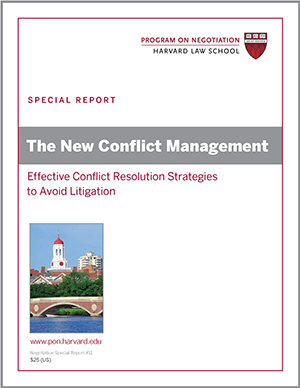
MESO negotiation, a negotiation strategy for creating value with a counterpart who may be reluctant to negotiate, allows negotiators to propose multiple offers without signaling commitment or preference for any one option. Business negotiators that practice integrative negotiation strategies often complain that although they try to focus on creating value, they run into far too many difficult people on the other side of the table who don’t believe in value creation. With multiple equivalent simultaneous offers (MESO), negotiation becomes a process of crafting an agreement that best meets your and your counterparts interests rather than a contest of wills at the bargaining table. MESOs create a dialogue for a negotiator and her counterpart with which to engage in the process of formulating a negotiated agreement.
How do MESO negotiation strategies work?
Often, negotiators focus exclusively on trying to claim as much as possible for themselves.
Despite their lack of cooperation, it remains in your best interest to create value, even with those you do not necessarily like or trust. Making trades across issues, such that both parties give up things they value less for things they value more, is at the heart of MESO negotiation strategies.
What techniques can you use to find such trades?
The easiest require some degree of trust between parties. For example, both sides could honestly and openly share information, or you could ask your counterpart to tell you what she values.
You might ask a customer how much financial value she places on receiving an order within two weeks rather than the standard delivery time of four weeks. You’ll need to frame such questions with care to prompt a frank response. In addition, because of the power of reciprocity, you are more likely to get an answer if you have given the other side some useful information.
But let’s assume you’ve already tried these strategies, and they didn’t work because you are dealing with difficult people. Here are two less common strategies that are especially useful when an uncooperative person is on the other side of the table.
Negotiation Strategies for Creating Value When Dealing with Difficult People
MESO Negotiation: The first negotiation strategy is to make multiple offers simultaneously.
When you put only one offer on the table at a time, if it’s turned down (perhaps in a hostile manner), you learn very little. Now consider what happens when you present multiple offers, each of which is equally valuable to you, simultaneously. If the other side refuses all of them, ask her which one she likes best.
Her preference for a specific offer provides a clue about where you might find value-creating trades. In addition, making multiple offers simultaneously signals your willingness to be accommodating and flexible, and your desire to understand the other party’s preferences and needs. So the next time you are about to make an offer, consider making three that you value equally.
The second negotiation strategy is to search for post-settlement settlements. Assume that you’ve just reached an agreement. The deal isn’t bad, but you don’t feel you’ve made all the value-creating moves available. Many people have been taught that when the deal is done, they should quit talking about it with their counterpart. Instead, consider asking the other side whether he would be willing to take another look at the agreement to see if it can be improved. Be sure to explain that you would each be free to reject a revised deal if it doesn’t improve both of your outcomes. Why propose this type of post-settlement settlement? Because you might find new sources of value to divide between you. Your initial agreement, which confirms your ability to work together, may make you and your counterpart feel more relaxed.
How has a MESO approach helped you create bargain at the negotiation table? Share your story in the comments.
Related Conflict Resolution Article: In the NFL, Roger Goodell’s Dealmaking for Mutual Gains
Adapted from “Encouraging Value Creation,” by Max H. Bazerman (professor, Harvard Business School), first published in the Negotiation newsletter, March 2010.
Originally posted in 2010.





As a professional negotiator and coach, I have been using MESOs for about 8 years and have had tremendous success…even with the most difficult people. While it takes a while to figure out how to use them appropriately, when used correctly it can help with attaining strong results. It has proven to be consistently effective, so I continue to use them in all my important deals.
Excellent post. A good book on uncooperative adversaries is “Difficult.Conversations”, which I highly recommend.